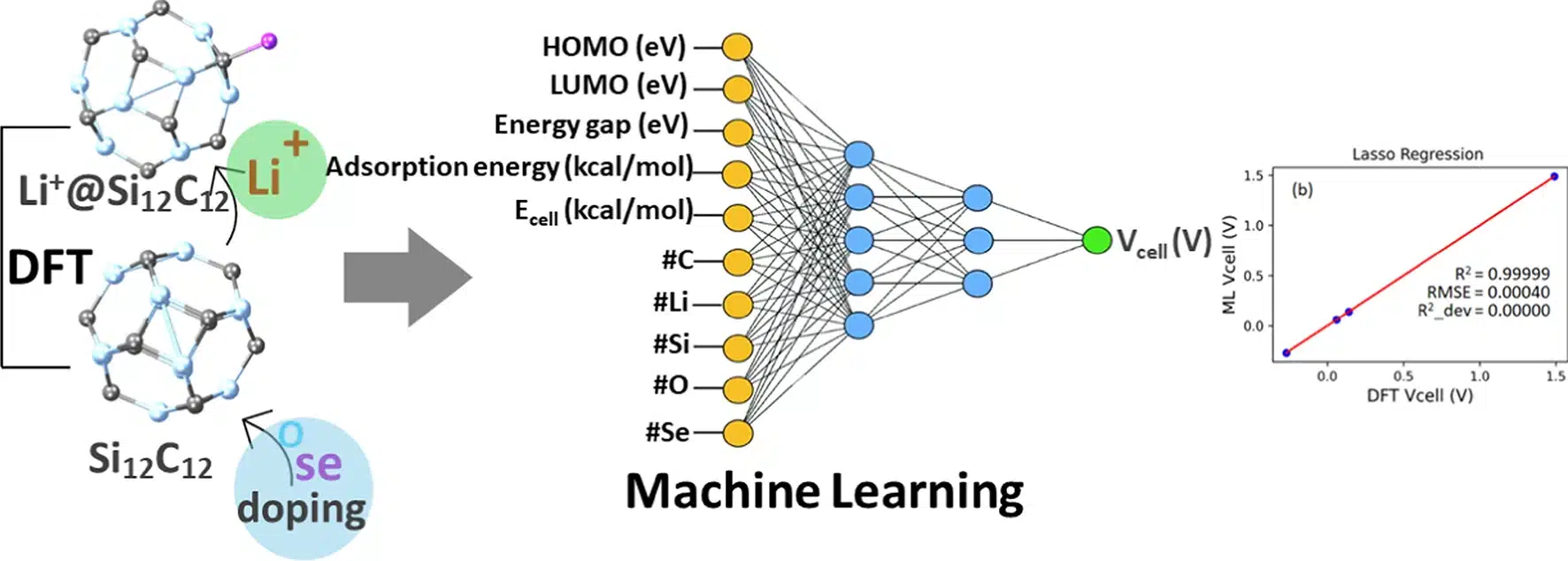
Advanced Ge12C12 and Si12C12 nanostructures show potential as high-performance anode materials for lithium-ion batteries.

The research done by University of Calabar, Nigeria explores the use of pristine and endohedral doped (Oxygen and Selenium) Ge12C12 and Si12C12 nanocages as anode materials for lithium-ion batteries (LiBs). Leveraging high-level machine learning (ML)-assisted density functional theory (DFT), researchers have investigated the electronic and electrochemical properties of these novel nanostructures, revealing promising results for their application in energy storage technology.
The need for improved anode materials stems from the limitations of traditional graphite anodes in Li-ion batteries, which offer low lithium intercalation and restrict energy density. To address this, the researchers applied advanced DFT techniques to design Ge12C12 and Si12C12 nanocages, both pristine and doped with oxygen and selenium, showing they could potentially surpass traditional materials in stability and energy capacity. The research is particularly relevant for manufacturers of electric vehicles, portable electronics, and energy storage systems, where high-capacity, durable batteries are essential for improved performance and longevity.
Using Gaussian 16 software, the researchers applied the B3LYP-GD3(BJ) exchange-correlation functional and the LanL2DZ (Los Alamos National Laboratory 2 double zeta) basis set for Ge, Se, and Si atoms, while assigning a 6-311 + G (d, p) basis set for lighter atoms like O, C, and Li. Zero imaginary frequency confirmation ensured minimal energy surfaces for each structure. These computational techniques provided a comprehensive understanding of the energy gaps (Eg) and the stability of each nanocage.
The stability of the nanocages varied with the material. Pristine Ge12C12 nanocages showed an Eg of 2.01 eV, decreasing to 1.68eV when lithium was adsorbed, indicating increased chemical reactivity. In contrast, Si12C12 nanocages demonstrated higher stability, with an Eg of 2.72eV, which changed based on lithium interactions. For instance, lithium adsorption reduced the Eg to 1.69eV, while the Li+ cation increased it to 3.33eV due to the resistant Si-C bond. Doping with O and Se further influenced the electronic properties, enhancing stability and optimising battery performance.
For accurate predictions, the researchers employed four ML models such as Linear, Ridge, Lasso, and ElasticNet to forecast cell voltages of nanocages based on DFT simulations. With cross-validation and hyperparameter tuning, the models achieved high accuracy, with the Lasso regression model most accurately predicting cell voltage, demonstrated by an R² score of 0.99 and minimal root mean square error.
Ultimately, pristine Si12C12 nanocages exhibited the highest stability, making them prime candidates for durable anode materials. However, endohedral Se doping in Ge12C12 showed the greatest conductivity, attributed to its low Eg of 1.16eV. These findings point to a significant step forward in the development of efficient anode materials, Setting foundation for high-performance and long-lasting lithium-ion batteries.










